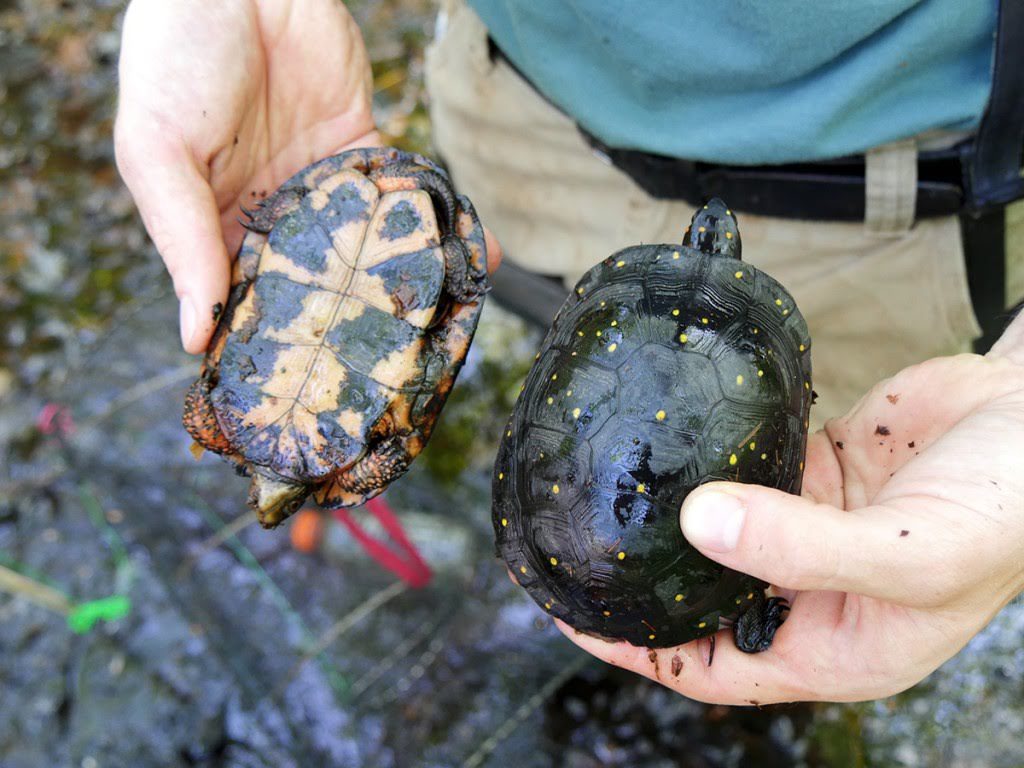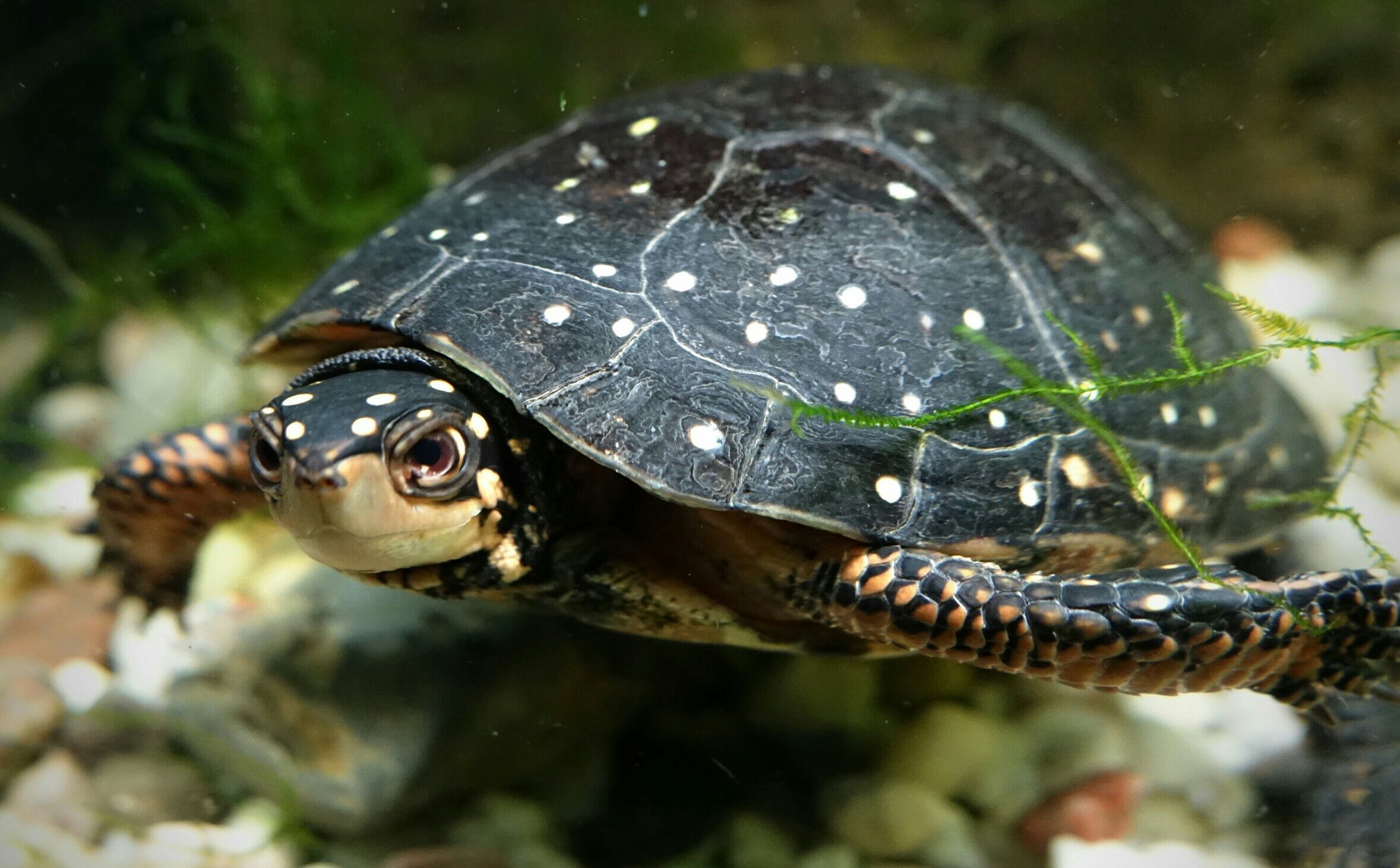If you are a reptile enthusiast or considering getting a pet turtle, you might be curious about the size that spotted turtles can reach. Spotted turtles (Clemmys guttata) are small and attractive turtles native to the eastern and central regions of the United States and parts of Canada.
Let’s explore how big spotted turtles get and what factors contribute to their growth and size.

Credit: www.susquehannockwildlife.org
Size and Growth Rate of Spotted Turtles
Compared to some other turtle species, spotted turtles are relatively small. They are considered one of the smaller turtles found in North America. On average, adult spotted turtles reach a size of 3.5 to 5 inches in carapace length (the length of the top shell).
However, it’s important to note that there can be slight variations in size based on several factors, including sex, genetics, diet, and habitat conditions. In general, female spotted turtles tend to be slightly larger than males, with some female individuals growing up to 5.5 inches in shell length.
Spotted turtles grow slowly, and their growth rate significantly depends on their access to a suitable diet and optimal conditions. With proper care and nutrition, hatchlings can expect to gain about an inch in shell length per year during their early stages of growth. However, growth rate tends to slow down as they reach adulthood.
Factors Influencing The Size Of Spotted Turtles
Let’s explore the factors that play a role in determining the size of spotted turtles:
- Genetics: Genetics can influence the overall size potential of a spotted turtle. Some turtles may have genetic predispositions that result in larger or smaller individuals.
- Sex: As mentioned earlier, females generally tend to be slightly larger than males.
- Diet: A well-balanced and diverse diet plays a vital role in the growth of a spotted turtle. Include a variety of protein sources, such as insects, mollusks, fish, and commercial turtle pellets. Additionally, make sure to provide them with fresh vegetables and fruits.
- Habitat and Housing: Providing the appropriate tank size and environmental conditions is crucial for the optimal growth and well-being of your spotted turtles. There should be enough space for them to move around comfortably and access to a basking area with UVB lighting.
- Temperature and Water Quality: Spotted turtles require specific temperature ranges for proper digestion, metabolism, and growth. Optimal water quality, including regular water changes, is also vital for their health and development.
Keep in mind that even though spotted turtles have the potential to grow to a specific size, individual growth rates may vary. Some turtles might grow slightly smaller or larger than average due to various factors.

Credit: www.vtherpatlas.org
Conclusion
Spotted turtles are charming and unique creatures that captivate reptile enthusiasts with their small size and attractive patterns. While they are relatively small compared to other turtle species, they can add joy and beauty to any turtle hobbyist’s collection.
Remember, providing your spotted turtle with proper care, including a nutritious diet, suitable habitat, and optimal environmental conditions, is essential for their growth and overall well-being. By meeting their needs, you can help ensure that your spotted turtle reaches its full potential size.
Do you have any experience with spotted turtles? Share your thoughts and stories in the comments below!






Leave a Reply